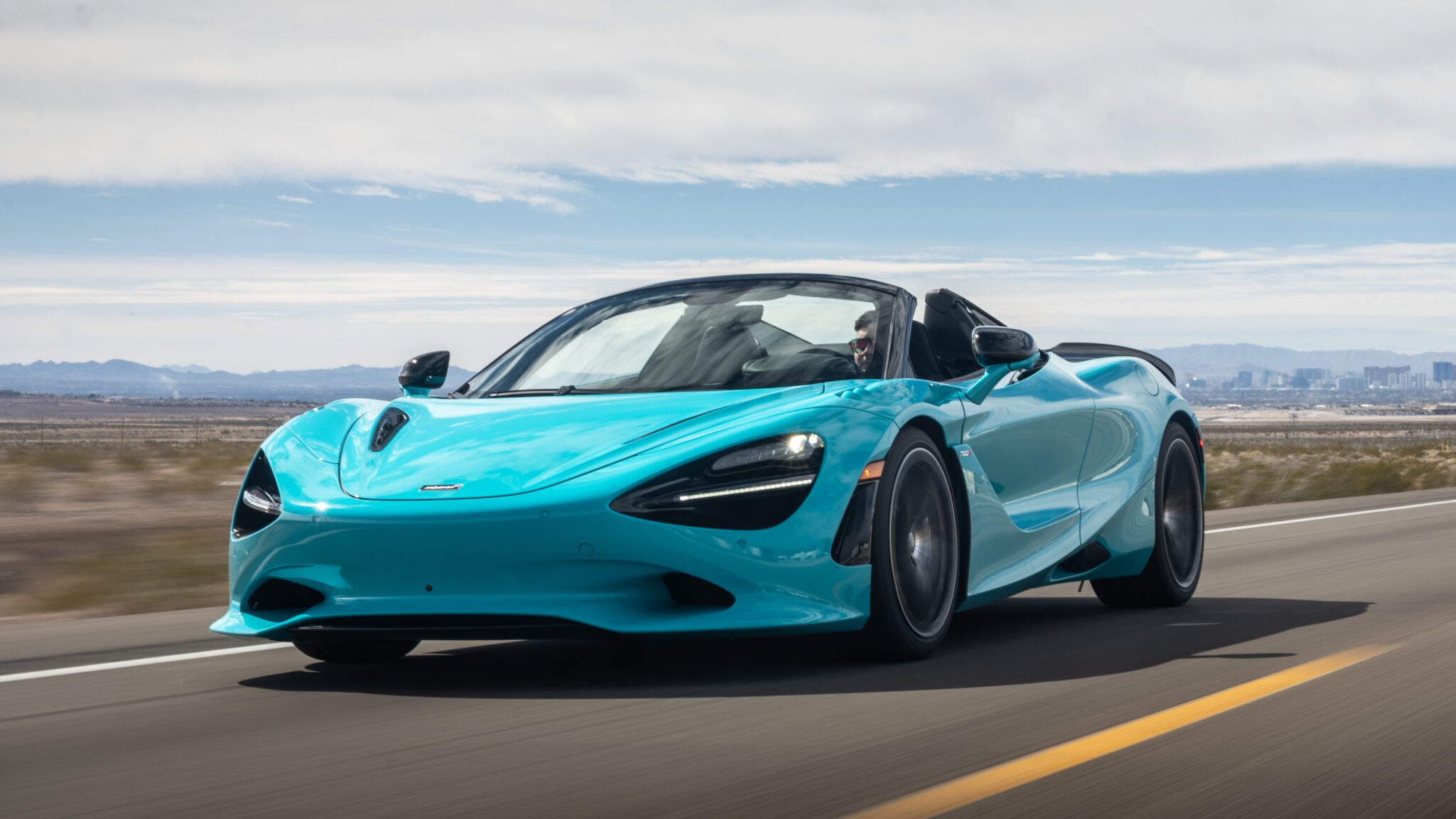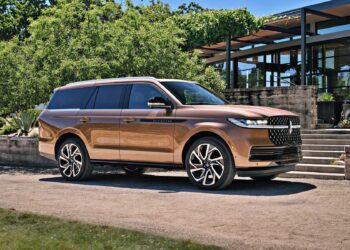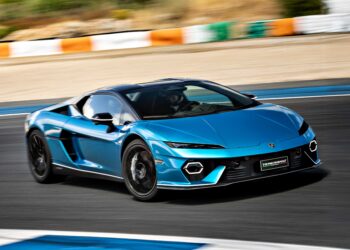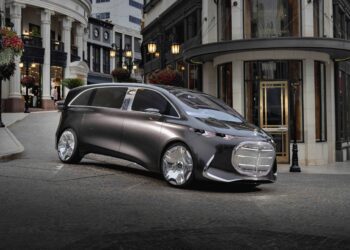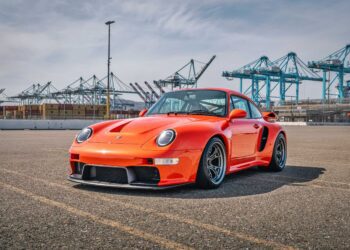The concept behind the McLaren 750S is a simple one: Take the bedrock foundation of the sublime 720S and add 30 percent new or updated parts, including some poached off the 765LT. The end result is a potent blend of McLaren’s road and track-focused cars. But while the 750S is slightly lighter, more powerful, and quicker than the 720S, but the earlier car could already keep up with hypercars. So why is the 750S an important car?
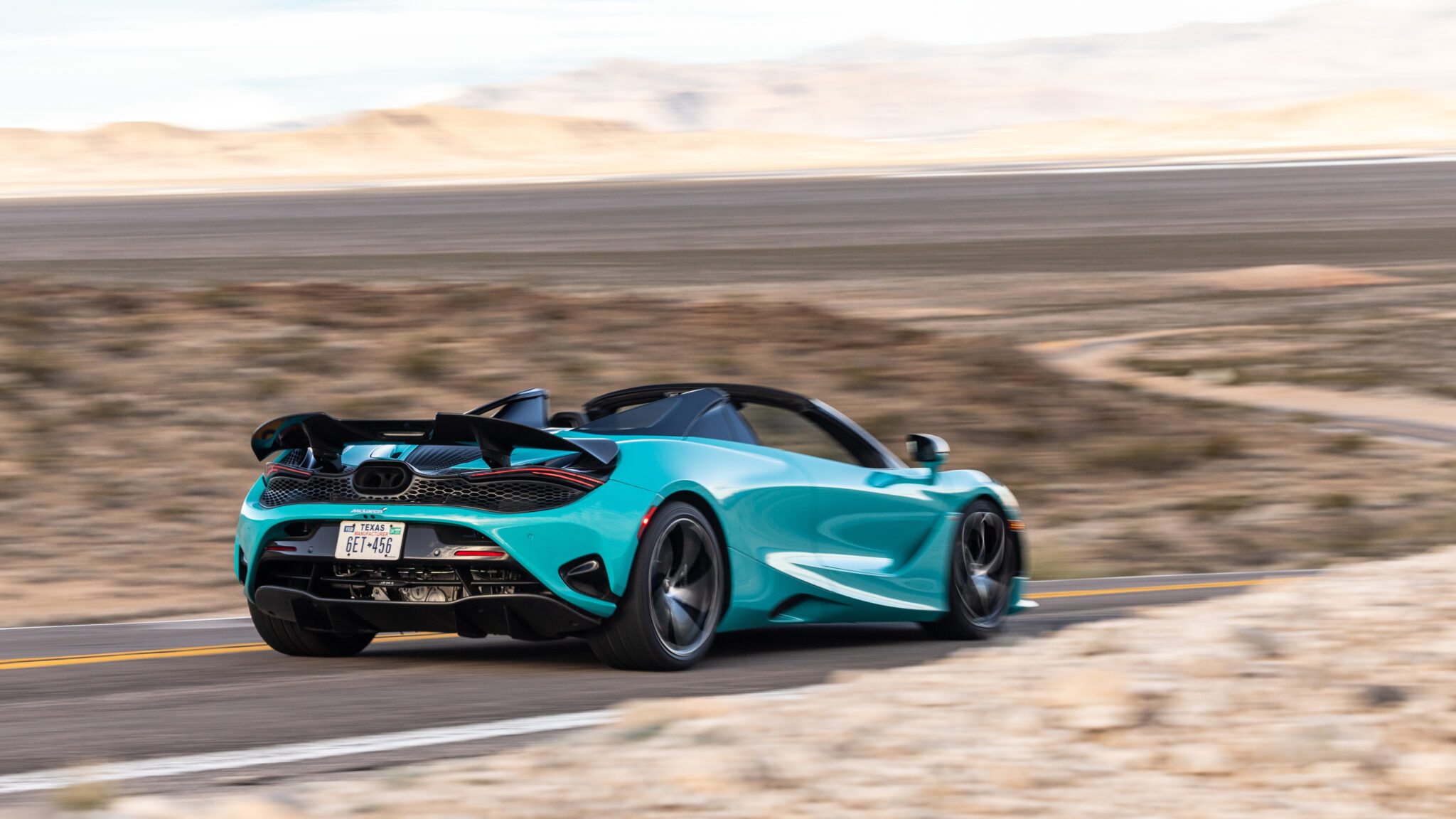
Well, for starters, the 750S aims much higher than simply improved performance stats. Its seven-speed dual-clutch features a shorter final drive ratio, meaning that while it accelerates a mere tenth of a second quicker to 60 mph than the 720S, it actually spends more time near its theatrical 8,500 redline. The 4.0-liter twin-turbocharged V8 benefits from higher boost pressure and lightweight pistons borrowed from the 765LT, making 740 horsepower with an engine that revs more freely, thanks to its reduced internal mass. Coupled with a faster steering ratio, revised spring rates, a widened track, and a crackling new centra-exit exhaust, the 750S is hypercar quick. Now, it brings more carnal appeal.
At first glance, it’s hard to tell the 750S from the 720S. This despite the long list of revised styling elements: new front bumper, an extended front splitter, louvered fenders, a re-styled rear bumper, new wheel designs, and a 765LT-inspired active rear spoiler. However, the relative subtlety of these tweaks limits their visual impact, a subtlety that seems to stem less from an unwillingness to push the 750’s design in a new direction and more from the natural limitations of a car that’s built to serve as the midpoint between two models without stepping over either. The effect of familiarity at play also contributes to its overall lack of distinction. This is, after all, a 2024 model-year car that looks strikingly like one that first went into production in 2017.

Step inside, and the 750S’s interior updates are obvious. Gone is the 720S’s rotating digital display, replaced with an Artura-style fixed screen, which shaves four pounds, features more vibrant graphics, and whose bezel houses a new paddle-style powertrain and handling mode selectors. A new vertically oriented center infotainment screen adorns the dashboard and comes standard with only Apple CarPlay—sorry, Android users. Its updated bezel houses a row of vertical buttons, the middle of which is McLaren’s new Control Launcher, allowing drivers to quickly recall preconfigured aero, handling, powertrain, and transmission settings. These tech updates take an interior that was once the 720S’s weak point and push it to be genuinely intuitive and class-leading.
The cabin’s material choices have improved as well. As standard, the McLaren 750S features an Alcantara-trimmed interior. However, new Performance and TechLux interior packages bring Nappa leather and contrast stitching, which can be had in a seemingly endless list of colors.
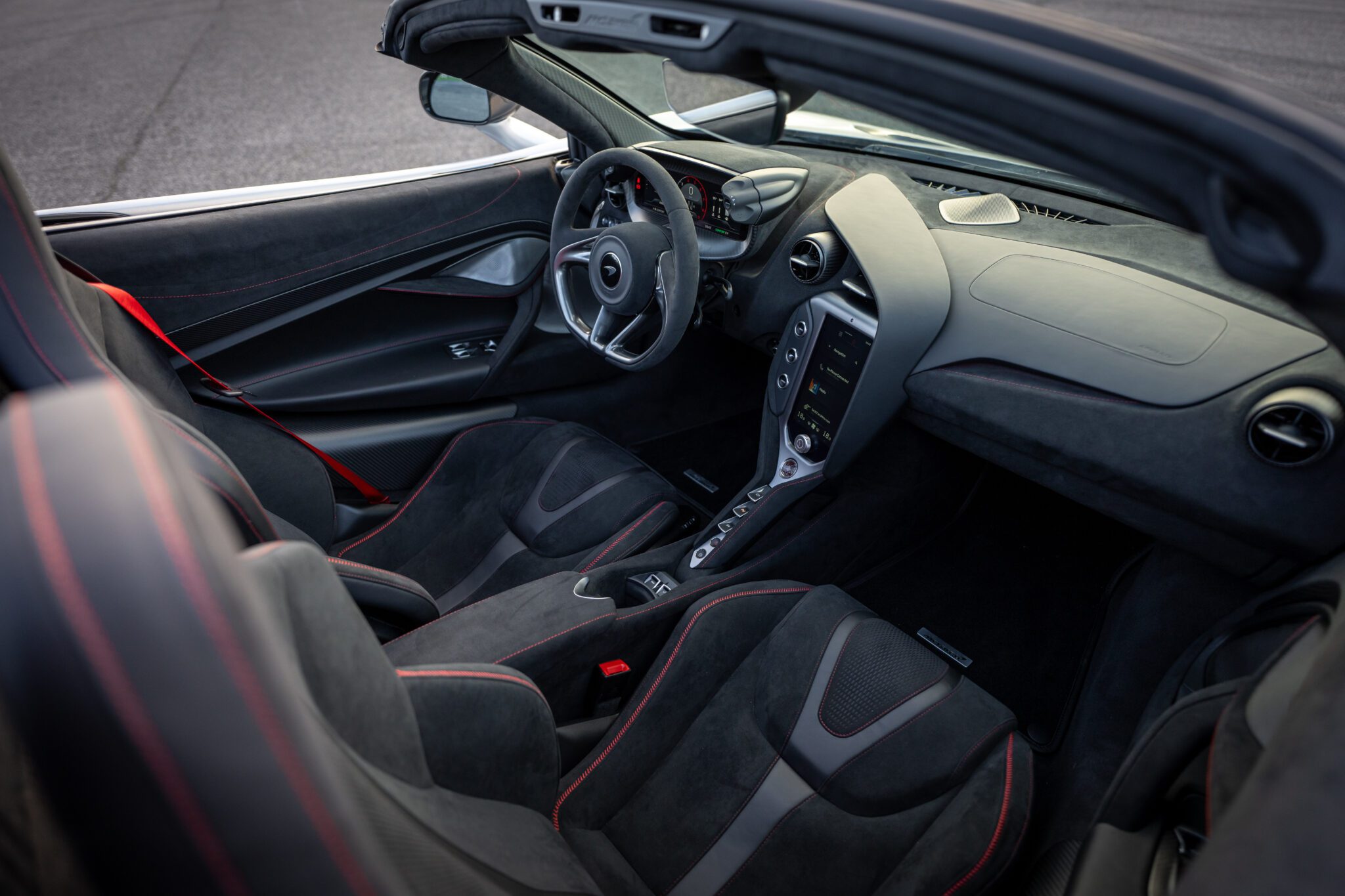
McLaren’s $7,600 Super-Lightweight Carbon Fiber Racing Seats, the same set offered for the Senna and 765LT, are now available for the 750S. Offered in two “sizes,” the carbon shells are identical; only the amount of padding used changes. Comfort and Carbon Fiber Racing seats are no-cost options, the latter of which is the sweet spot within the lineup. The Comfort option is, as expected, somewhat plush but lacks side bolstering. At the same time, the Senna’s firm carbon buckets allow for greater connection with the car by transmissing more feedback from the chassis but will only comfortably serve only the lighter and shorter among us.
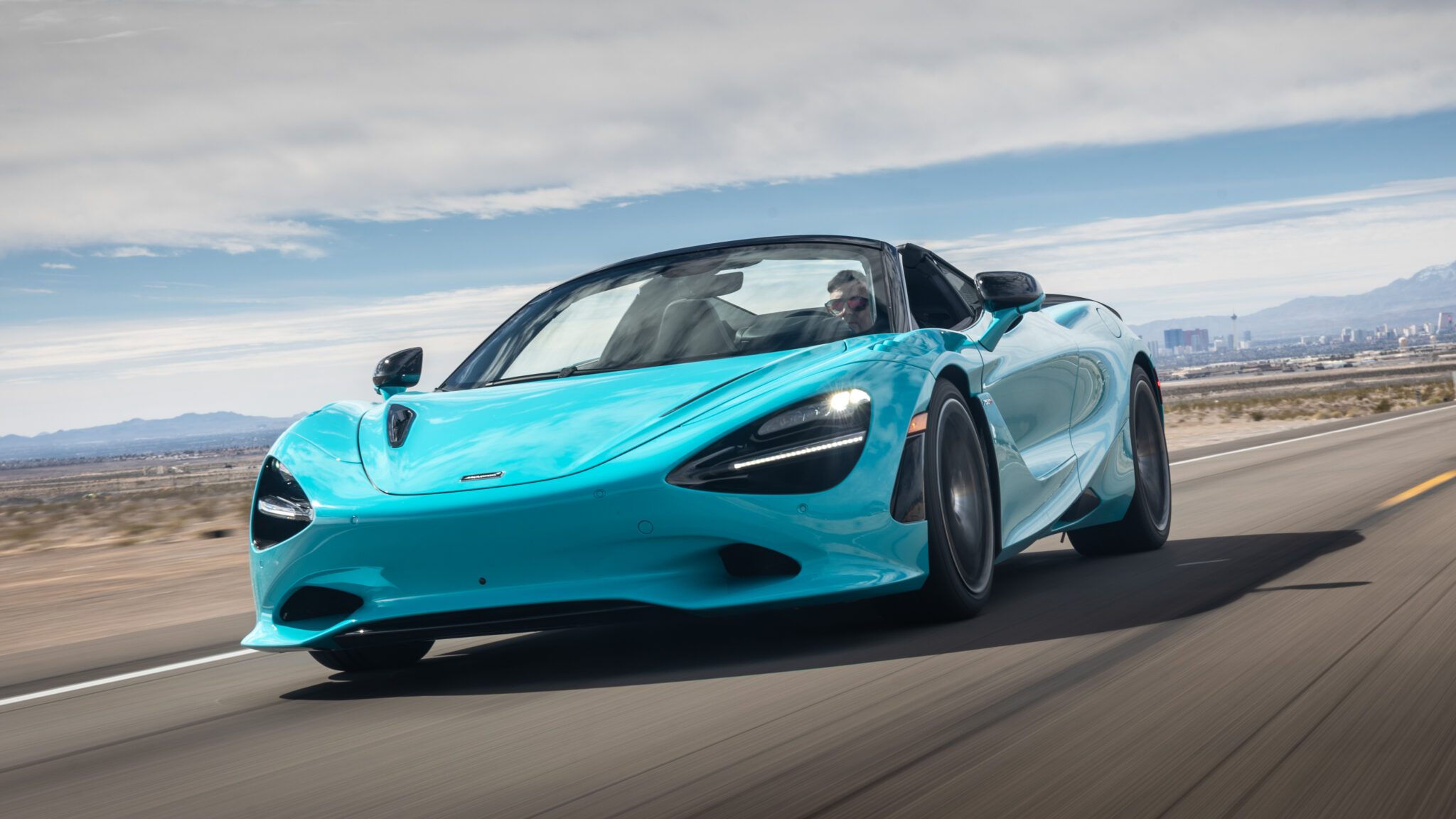
Like the 720S that inspired it, the McLaren 750S is a hypercar masquerading as a supercar. Its twin-turbocharged 4.0-liter V8 now develops 740 horsepower and 590 pound-feet of torque, up 30 hp and 22 lb-ft, all of which goes to its rear wheels. However, despite these herculean figures, McLaren’s well-calibrated traction control system steps in precisely when you need it to, allowing the 750S to put practically all of its power down.
Dive into a corner in the 750S, and you’ll feel the cumulative effects of this car’s subtle but focused improvements. Its hydraulically assisted power steering rack is still the most talkative of any modern supercar, now made even quicker thanks to its revised ratios. Its coil spring and semi-active damper suspension are now lighter by 4.4 pounds, three percent softer up front, and four percent firmer in the back, while the 750S’ overall track widens by 0.3 inches.
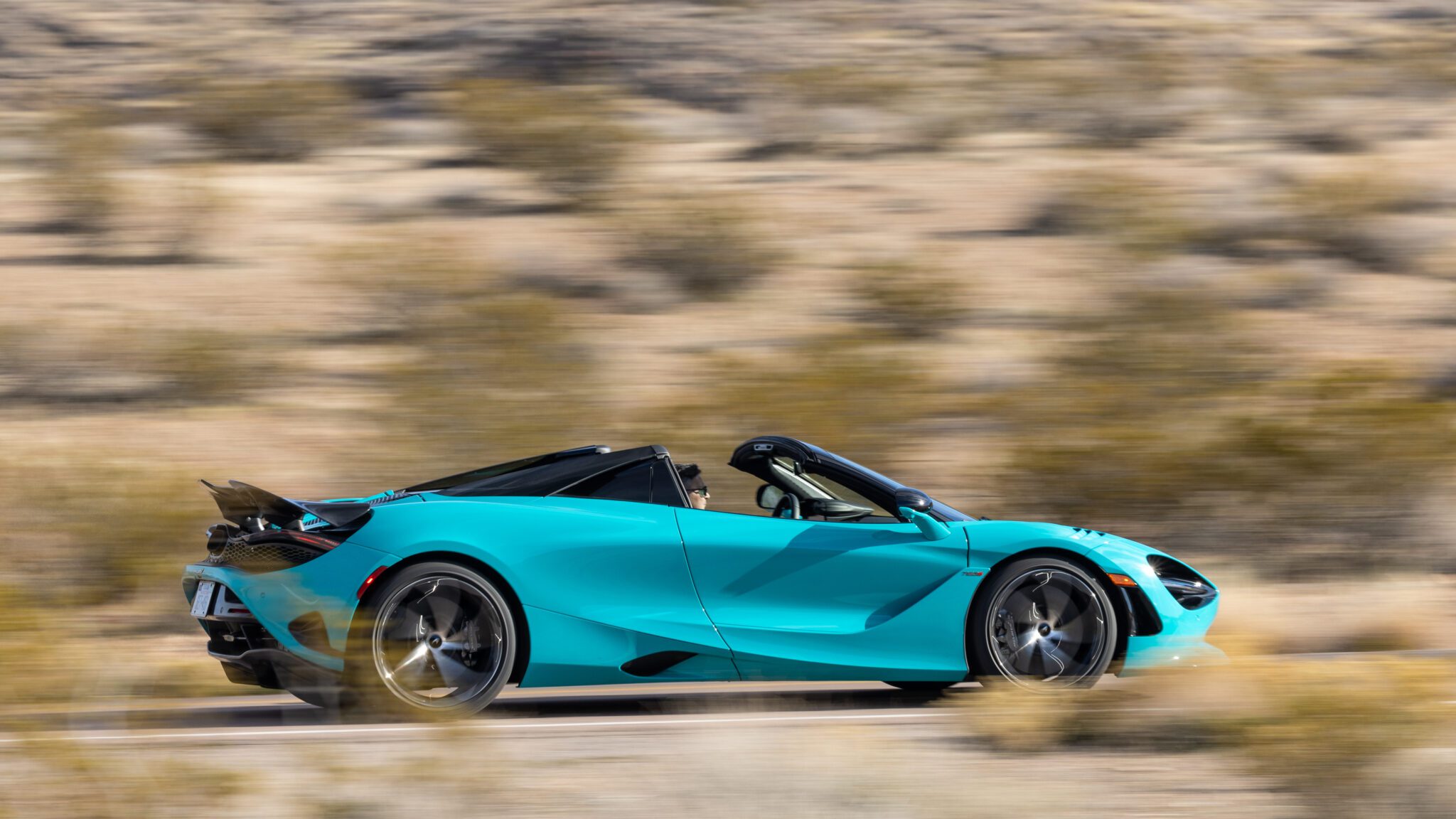
Handling that power is made easy thanks to the 750S’s updated Comfort, Sport, and Track handling and powertrain modes, alongside a new Variable Drift Control, which allows drivers to dial in how much they’d like the rear end to step around before the car’s computers kick in. Despite its slightly firmer suspension, the 750S retains the duality the 720S is famous for. It confidently tackles significant road imperfections in Comfort mode while dialing out body roll and delivering balance and stability in Sport and Track.
The result is an agile, grippy, and nicely balanced front end, which combines with a rear that, although tail happy when provoked, will hold on nicely when driven thoughtfully. And although similar words could aptly describe the 720S, the 750S builds with an added layer of connectedness. You can look deep into a corner and imagine where you’d like to place it, and it intrinsically follows your inputs. And it isn’t just the feedback it provides that impresses; it’s how precise its steering, brakes, and throttle are, allowing this car to change direction precisely but intuitively.
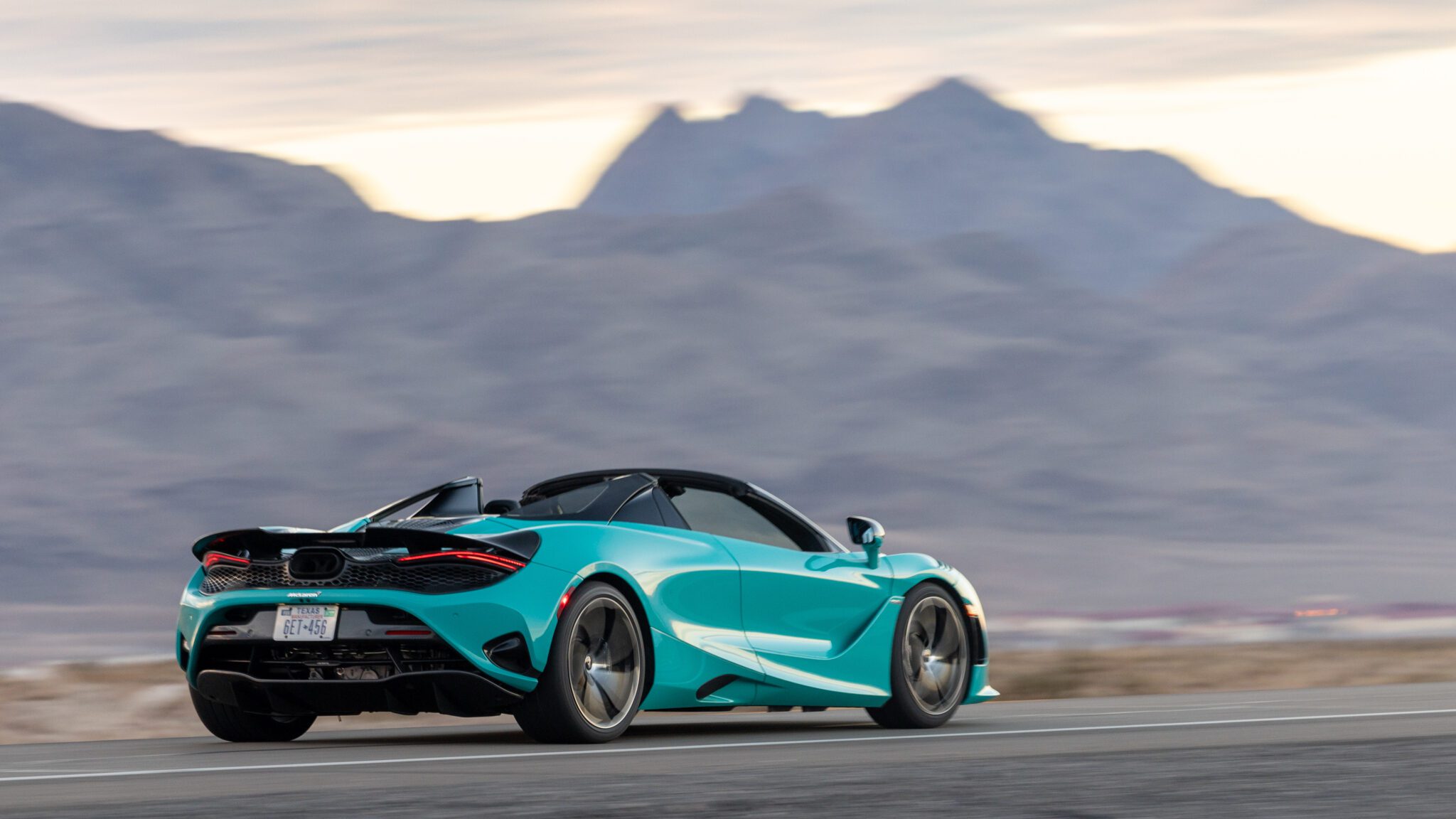
On the back end of a corner, the 750S reveals its most significant update: its shortened gears. The paddles behind its buttonless steering wheel still hook up to a seven-speed dual-clutch automatic, but its final drive is shorter overall like you’d find in a 765LT. Whether in coupe or Spider form, the 750S now sprints to 60 mph in 2.7 seconds or, for those keeping score, a whole tenth of a second quicker than the 720S.
The big story, however, is how dramatic its acceleration feels as you blast out of a bend. Due to its shorter gears, you not only spend more time clicking through them but also hover around its 8,500 rpm redline for far longer. Its top speed may shrink from 212 mph to a frankly pedestrian 206 mph, but the 750S is quicker overall, especially at slower speeds where theatrical acceleration always beats an unreachable top speed figure.
Its V8 remains responsive despite its increased boost pressure, thanks mainly to its lightened pistons, another gift from the 765LT. Coupled with a brand-new central-exit Sports Exhaust that crackles authentically as you decelerate while accentuating this engine’s higher-pitched notes under load, you get a sense that the 750S is constantly trying to overwhelm the senses.
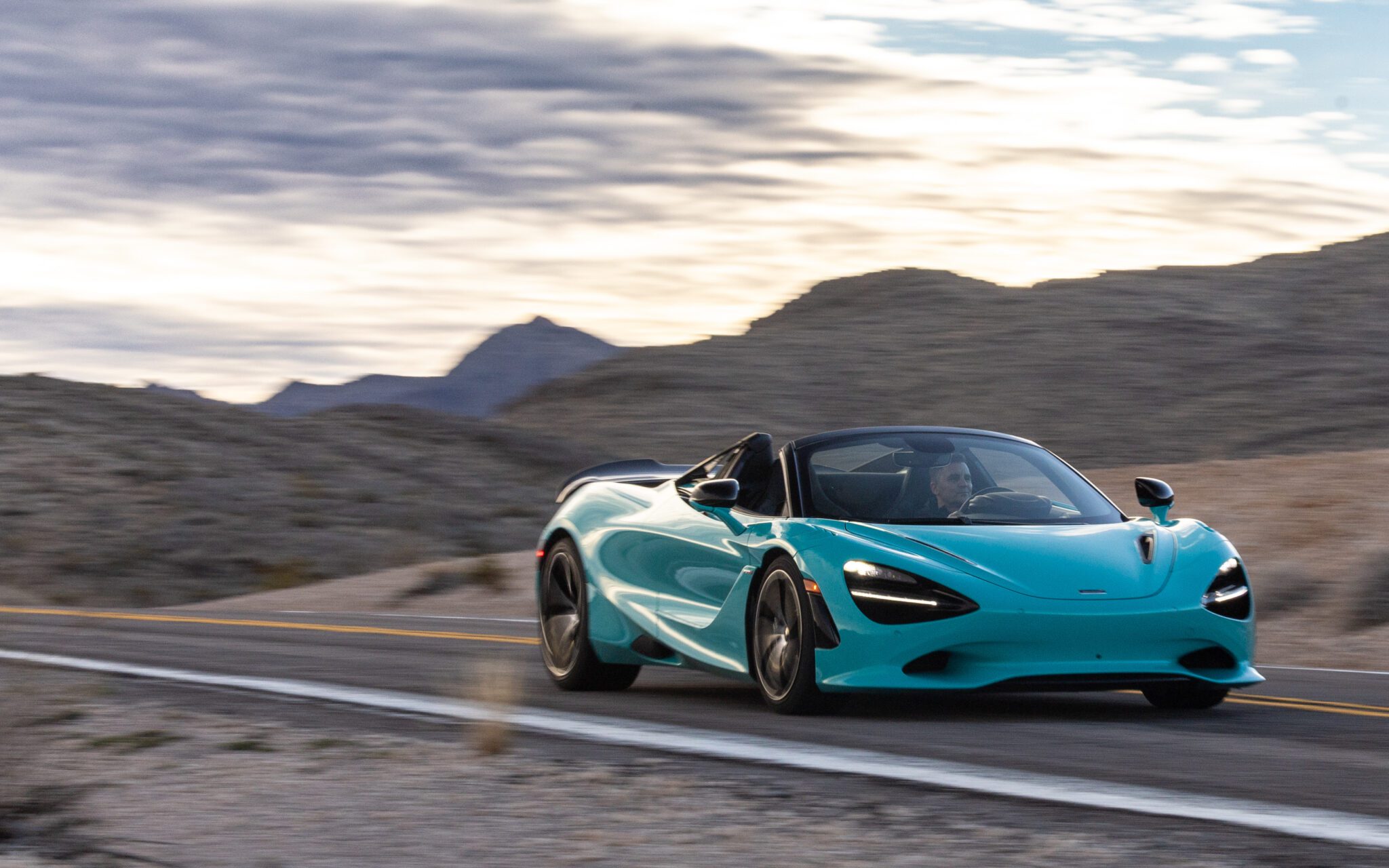
Even as you connect tight bends, the McLaren 750S feels practically massless. At its core, we have its carbon-fiber monocoque to thank. It allows a coupe with the right options to boast a 2,815-pound dry weight figure (2,923 lb for the Spider) and is firm enough not to require additional strengthening in the 750S Spider. Thanks to a carbon fiber folding top, most of this convertible’s 108-pound gain comes from its roof mechanism. More importantly, this rigidity means it’s nearly impossible to tell a coupe from a Spider from a driving perspective alone.
As standard, the 750S counts on 15.4-inch and 15-inch carbon ceramic rotors with six and four-piston calipers to slow itself down. And while they may require a firm press of the pedal to activate fully, they’re easy to modulate and offer excellent feedback as you near the sweet spot before its ABS kicks in. For those seeking even higher performance, a $18,050 Track Brake system carries over the ceramic discs and calipers first introduced for the Senna, along with a new brake booster, vacuum pump, and a caliper cooling system.
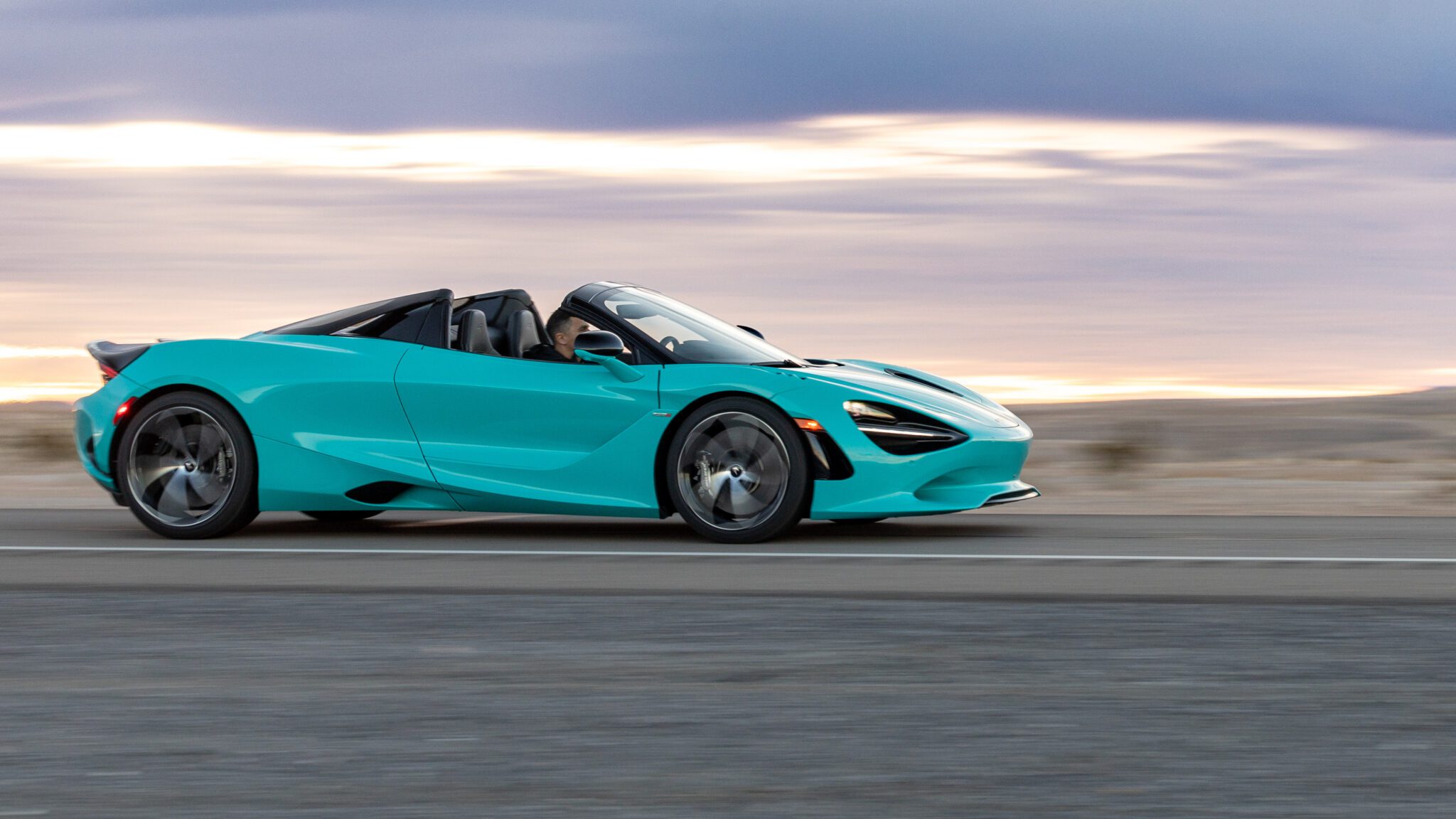
The 2024 McLaren 750S starts at $331,740, including $5,500 destination and $2,240 America Accessories Pack fees. Opting for the Spider carries a $21,000 premium up to its $352,740 base price, including the same fees. And while the pair is immediately available to order, the British carmaker confirmed that about half of the total production run has already been sold. Simultaneously, the brand is deep into developing the hybrid V8 powertrain that’ll debut in its eventual successor.
We have to look past its headline-worthy figures to answer the earlier question of not just what the 750S is but whether or not its updates make a meaningful difference. Its 66-pound savings, 30 horsepower bump up to 740, and 2.7-second 0-60 time are impressive, but they’re not the updates with the most significant impact. Instead, this car’s shortened gear ratios, quickened hydraulic steering, and revised suspension shift its focus toward driver engagement. The 750S may not be all-new, but it takes what was already one of the best-driving supercars and improves it in every meaningful way.

